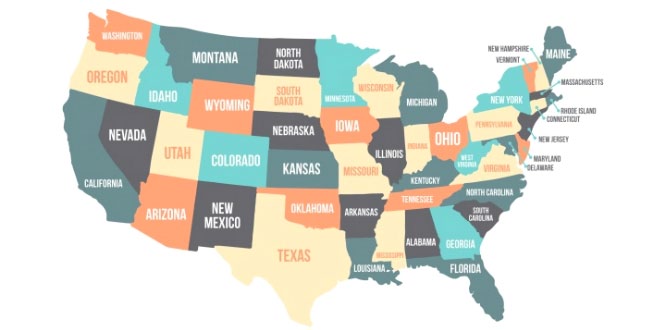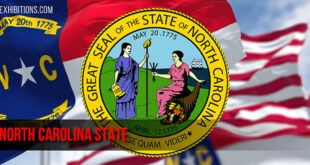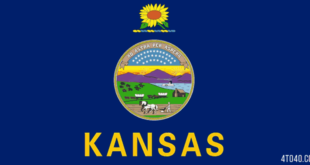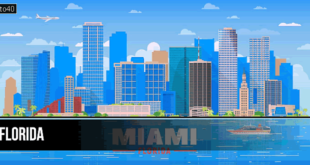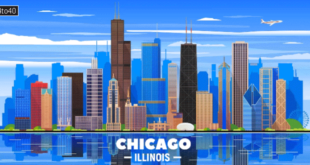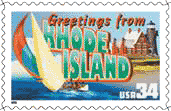
The official name, the State of Rhode Island and Providence Plantations, refers to early settlements on Aquidneck Island (later known as Rhode Island) and the Proprietors’ Company for Providence Plantations on the mainland. Since settlement, Rhode Island has had a significant and varied history. It was the first colony to declare its independence from Great Britain and was a pioneer industrial state in the new nation. With increased competition from larger states with broader resource bases, Rhode Island has been forced to find other paths leading to economic prosperity.
Rhode Island State: Land & Resources
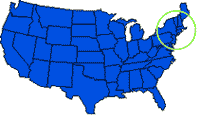 Rhode Island’s two physiographic regions are the eastern lowlands and the western uplands. The gentle rolling eastern lowlands include the bay shores and islands. Within Narragansett Bay the largest islands are Conanicut, Dutch, Prudence, and Rhode Island. The second region, the western upland, occupies the western half of the mainland. It has steep slopes and rocky outcrops and includes about 20 hills exceeding 180 m (590 ft) in elevation. The effects of glaciation are found in the large areas of glacial outwash, disarranged drainage, swamps, and ponds.
Rhode Island’s two physiographic regions are the eastern lowlands and the western uplands. The gentle rolling eastern lowlands include the bay shores and islands. Within Narragansett Bay the largest islands are Conanicut, Dutch, Prudence, and Rhode Island. The second region, the western upland, occupies the western half of the mainland. It has steep slopes and rocky outcrops and includes about 20 hills exceeding 180 m (590 ft) in elevation. The effects of glaciation are found in the large areas of glacial outwash, disarranged drainage, swamps, and ponds.
Climate
Rhode Island’s basically humid continental climate is modified by the ocean, but variability is the dominant characteristic. The average annual temperature is 10 deg C (50 deg F). The coldest months are January and February, with mean temperatures of -2 deg C (29 deg F); July, the hottest month, has a mean temperature of 23 deg C (73 deg F). The annual precipitation averages 1,016 mm (40 in).
Tourism
Tourism is a major source of income for Rhode Island. Large investments have expanded accommodations and increased boating facilities, and new camping and recreational areas have been developed. The Newport mansions (built between 1839 and 1901) whose owners referred to them as cottages, are a major attraction.
Rhode Island State: History
At the time of the first white settlement in Rhode Island, five Indian tribes lived in the area: the NARRAGANSETT, WAMPANOAG, PEQUOT, Niantic, and Nipmuck–all members of the Algonquian linguistic group. In 1511, Miguel Corte Real, a Portuguese navigator, is believed to have sailed along Rhode Island’s coast. Narragansett Bay was explored by Giovanni da Verrazano in 1524, and at the beginning of the 17th century Dutch traders–including Adriaen Block–sailed through the offshore waters.
Colonial Period
In 1636, Providence, the first permanent white settlement, was founded by Roger WILLIAMS. Exiled from Boston, in 1638 he and 12 other settlers on the mainland formed the proprietors’ Company for Providence Plantations.
In that same year William CODDINGTON and John Clarke were forced to leave Massachusetts because of their support for the religious leader Anne HUTCHINSON. The two obtained an Indian deed to Aquidneck Island in Narragansett Bay and settled the northern end of the island at present-day Portsmouth. A 1639 dispute between Coddington and Hutchinson caused the former moved south and established Newport. In 1644, Aquidneck was renamed Rhode Island. Williams returned from England that same year with a charter for the colony that united the three settlements into “The Incorporation of Providence Plantations in the Narragansett Bay in New England.” The colony’s first legislative session was held in May 1647, when the Warwick colony of Samuel GORTON was included with the other three units. In 1663 a royal charter recognizing Rhode Island’s religious freedom and self-government was granted by the English king CHARLES II; the document remained in effect until the state constitution was drawn up in 1842.
Rhode Islanders had good relations with the Indians until they were forced to flee to Newport when colonists in Connecticut and Massachusetts instigated KING PHILIP’s WAR (1675-76).
The maritime era arrived when surplus agricultural products enabled farmers to start trading. Large plantations on Rhode Island and in the southern part of the mainland grew corn, practiced animal husbandry, and processed wool, meat, and cheese for export. Trade developed with the West Indies, the ports of Europe, and the Pacific via South America or Africa. Maritime activities included privateering against the enemies of Britain, slave trading, and whaling. Newport and several other towns were the main beneficiaries of trade. Disputes with Britain over trade and British determination to collect taxes resulted in the appearance of a fleet of armed revenue ships in Narragansett Bay. Increased hostility and violence resulted, including the burning (1772) of the GASPEE.
On May 4, 1776, Rhode Island became the first colony to declare independence, and Rhode Islanders fought in every Revolutionary War battle. Gen. Nathanael GREENE of Coventry, R.I., was second in command to George Washington. Newport was occupied by the British from December 1776 to October 1779, during which time 5,000 patriots fled and 500 houses were destroyed. The town did not recover quickly. Activity shifted to Providence, where trade was initiated with China in 1787. Rhode Island was the last of the 13 colonies to ratify (1790) the constitution, a delay brought about by its citizens’ apprehensions at yielding power to the federal government.
The Era of Manufacturing
The factory system in America was introduced when Moses Brown with Samuel SLATER established (1790) the first U. S. cotton textile mill at Pawtucket. The skills developed in colonial forges were used in making machinery. The gold-plating technique of Nehemiah Dodge (1794) and the establishment (1831) of a silver factory by Jabez Gorham were milestones in jewelry-silverware production. As foreign commerce decreased in the 1840s, rubber manufacture began. By 1890 the Providence area had become the largest producer of woolen goods in the United States. Many villages developed around the textile mills, which were located at waterpower sites. The tide of immigrants supplied the necessary laborers. Whaling, once an important part of Rhode Island’s economy, declined after the mid-19th century when whale oil for illumination was supplanted by other fuels.
Beginning in the 1920s the textile industry began to move to the South, seeking cheaper labor and the use of modern equipment. Local prosperity increased, however, with the development of defense-related industries. In World War I the Torpedo Station at Newport was a major employer. From World War II until its closing in 1973, the Naval Air Station at Quonset Point remained the largest civilian employer in the state. Also in 1973 the U.S. Navy moved 5,000 families from the Newport area because of ship reassignments. Electrical machinery, fabricated metals, and plastics manufacturing have strengthened the postwar economy.
In the 1980s, Rhode Island moved toward a more service-oriented economy, but the state has continued to face economic challenges in the 1990s. Manufacturing jobs decreased by 7,500 between 1985 and 1990, and a steady decline in defense-related employment was seen as likely to continue. While the increase in service-sector employment was welcome, it was dependent upon a generally steady economy.
Rhode Island State: Land
- Area: 4,002 sq km (1,545 sq mi); rank: 50th.
- Capital and largest city: Providence (1990 census, 160,728).
- Counties: 5.
- Elevations: highest–247 m (812 ft), at Jerimoth Hill; lowest–sea level, at the Atlantic coast.
Rhode Island State Symbols:
Flag:

Statehood:
May 29, 1790; the 13th state
Nickname:
Ocean State
Bird:

Tree:
Red Maple
Flower:
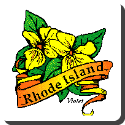
Motto:
Hope
Song:
“Rhode Island”
 Kids Portal For Parents India Kids Network
Kids Portal For Parents India Kids Network
